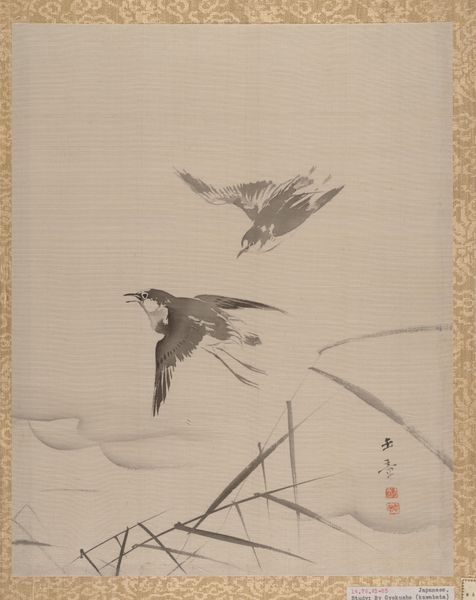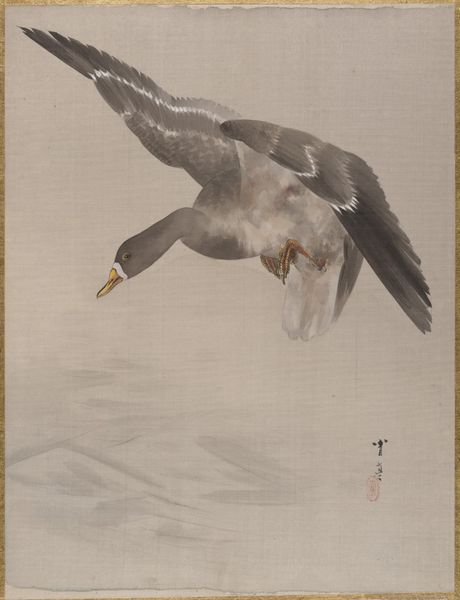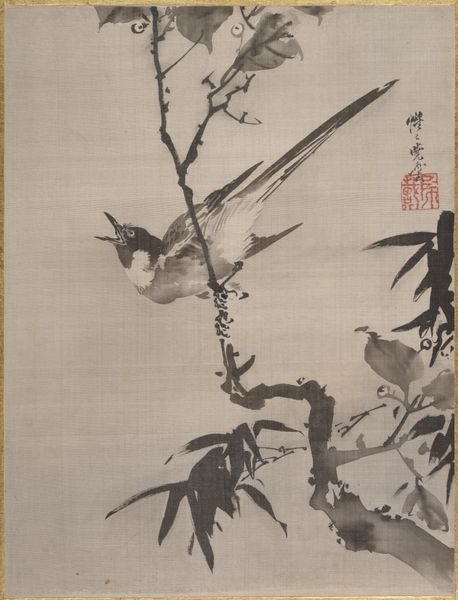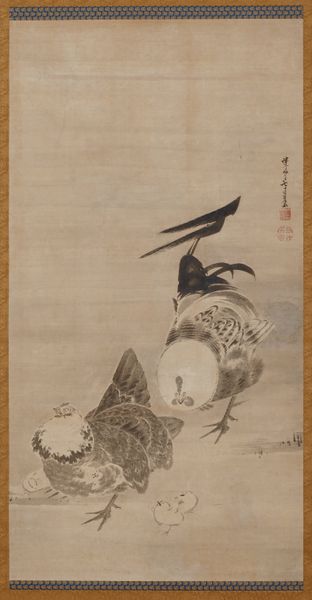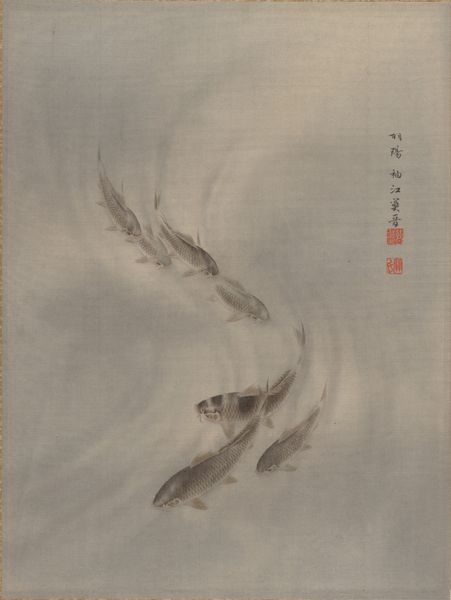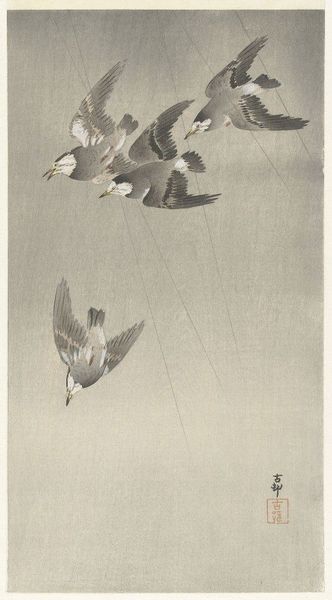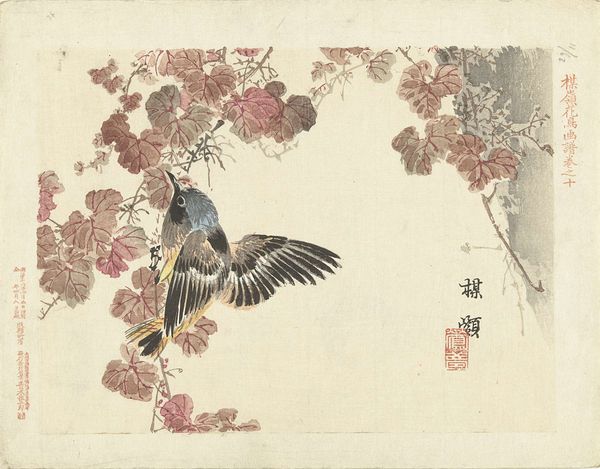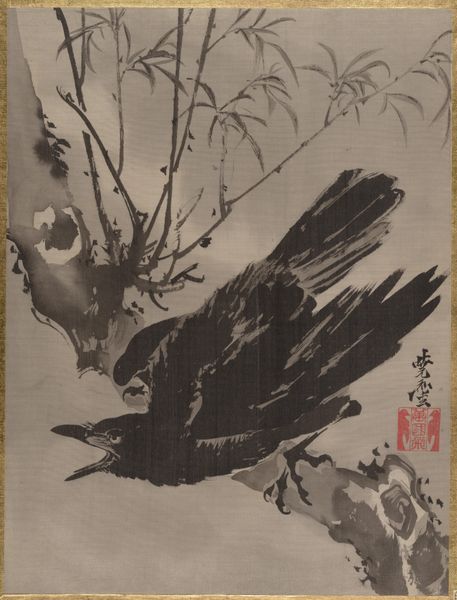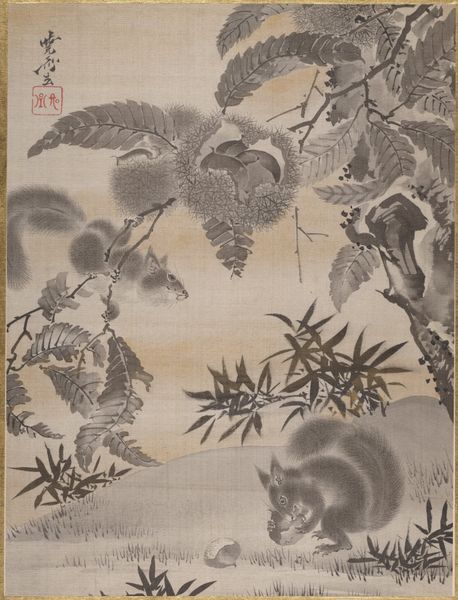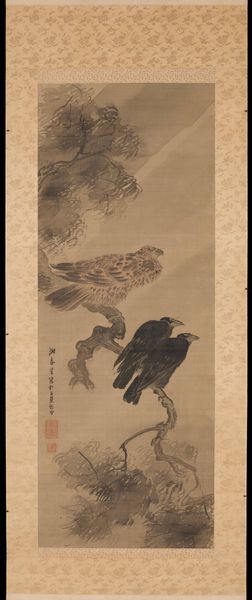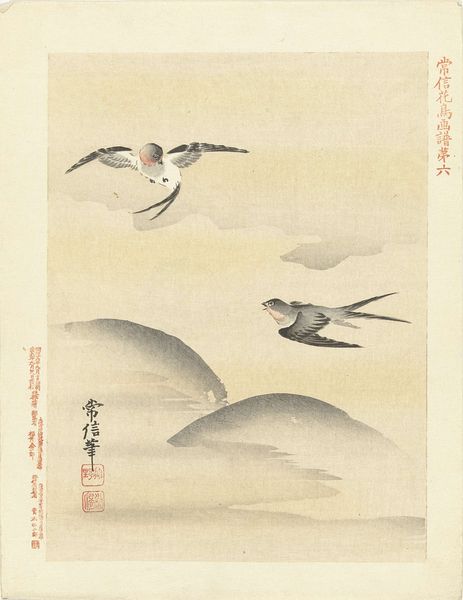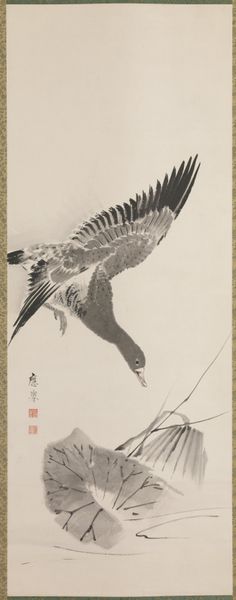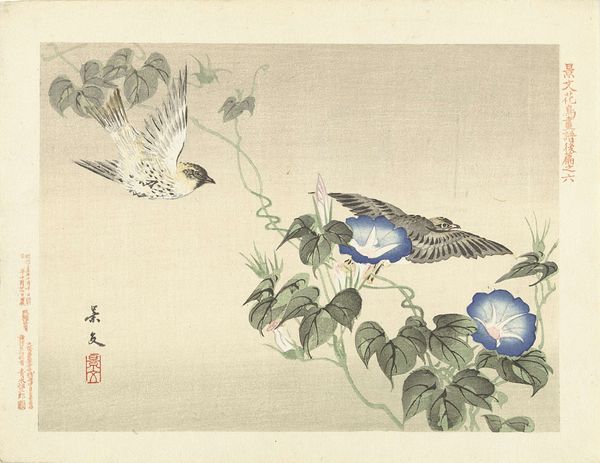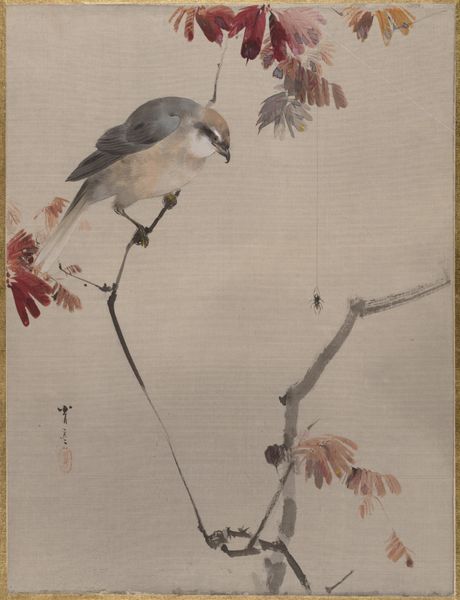
Dimensions: 14 1/4 x 10 3/4 in. (36.2 x 27.3 cm)
Copyright: Public Domain
Curator: Immediately, this work breathes. The sparrows captured in this floating moment... it's almost dreamlike. Editor: Exactly! We're looking at Watanabe Seitei’s "Sparrows Flying," created sometime between 1877 and 1897. It is held here at the Metropolitan Museum of Art. Watanabe, working primarily in the Meiji period, bridged traditional Japanese aesthetics with Western realist techniques. Curator: It’s funny you say 'bridges’—I'm struck by the Orientalist aspect. To what extent is this a vision through a Western lens? It's almost a pastiche of Realism and what was then considered “Japanese-ness.” Editor: That's a sharp read. Think of the social currents at the time—Japan was actively negotiating its identity on the world stage. How could it be perceived, visually, but also conceptually? The watercolor medium here itself is intriguing. The washes suggest movement and capture the fleeting nature of the birds in flight, quite unlike traditional detailed renderings. Curator: Precisely! There is a vulnerability here that goes beyond mere objective depiction. The artist's signature, along with the calligraphic inscription, places him within a tradition of individual expression, although, perhaps, also perpetuating stereotypical imagery of Asian art. Editor: I love your reading! For me, there's a Zen-like quality—emptiness holding movement. And these birds feel so present, right? Like messengers of the mundane, bringing peace, defying gravity and history, one brushstroke at a time. Curator: In a way, those tiny avian forms become a quiet revolt against static, rigid forms of identity. The canvas resists any sort of definition except for fleeting observation, creating an image of freedom. It's so interesting how such simple themes can be loaded with context. Editor: Absolutely. Thanks to this perspective, I don't see a superficial landscape but rather a nuanced reflection on cultural dialogue, on flight, on freedom, all within a small work. Curator: Agreed. I, in turn, am glad we could engage with Watanabe's work in all its dimensions and hope others enjoy its presence in the world as much as we do.
Comments
No comments
Be the first to comment and join the conversation on the ultimate creative platform.
